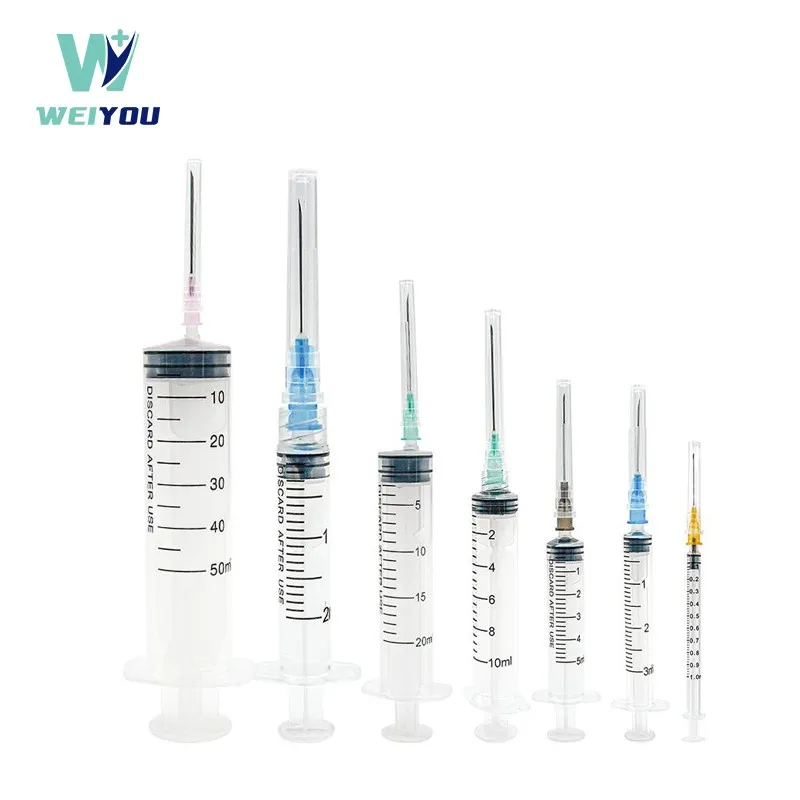- English
- Español
- Português
- русский
- Français
- 日本語
- Deutsch
- tiếng Việt
- Italiano
- Nederlands
- ภาษาไทย
- Polski
- 한국어
- Svenska
- magyar
- Malay
- বাংলা ভাষার
- Dansk
- Suomi
- हिन्दी
- Pilipino
- Türkçe
- Gaeilge
- العربية
- Indonesia
- Norsk
- تمل
- český
- ελληνικά
- український
- Javanese
- فارسی
- தமிழ்
- తెలుగు
- नेपाली
- Burmese
- български
- ລາວ
- Latine
- Қазақша
- Euskal
- Azərbaycan
- Slovenský jazyk
- Македонски
- Lietuvos
- Eesti Keel
- Română
- Slovenski
- मराठी
- Srpski језик
How Do Veterinary Needles Differ from Human Needles?
2024-10-09
Veterinary needles are essential tools in animal healthcare, used for everything from vaccinations and blood sampling to administering medications. While they may appear similar to human medical needles at first glance, there are several important differences between the two. Understanding these distinctions is crucial for ensuring the safety and comfort of animals, as well as for the proper administration of medical treatments. In this blog, we'll explore the key ways in which veterinary needles differ from human needles and their specific applications in veterinary medicine.
1. Size and Gauge Variations
One of the most prominent differences between veterinary and human needles is the range of sizes and gauges available. The gauge of a needle refers to its thickness, with lower numbers indicating thicker needles and higher numbers indicating thinner ones. Veterinary needles typically come in a broader range of gauges and lengths to accommodate the diverse range of animal species and their sizes.
- Larger Gauges for Larger Animals:
Veterinary needles are available in larger gauges (e.g., 16G to 18G) that are suitable for larger animals like cattle, horses, and even exotic species like elephants. These larger needles are necessary to penetrate thicker skin and tissues effectively.
- Smaller Gauges for Smaller Animals:
Needles with smaller gauges (e.g., 22G to 27G) are used for smaller animals like cats, dogs, and rabbits. These needles are less invasive and more suitable for delicate tissues.
- Longer Needles for Deeper Injections:
Longer needles are often used for intramuscular injections in large animals to ensure that the medication reaches the appropriate muscle depth. Conversely, shorter needles are used for subcutaneous injections in smaller animals to avoid over-penetration.
2. Material and Coating Differences
Veterinary needles are typically made from stainless steel, similar to human medical needles. However, veterinary needles may also be designed with specific coatings or made from specialized materials to ensure smooth penetration and minimize discomfort for animals.
- Silicone-Coated Needles:
Some veterinary needles are coated with silicone to reduce friction during insertion. This feature is particularly beneficial for animals with sensitive skin or when multiple injections are required in a short period.
- Durable Construction for Repeated Use:
In some cases, veterinary needles are designed for repeated use, particularly in large animal settings where multiple doses are administered to several animals consecutively. These needles are built to be durable and resistant to bending or breaking.
3. Design and Structure
The design of veterinary needles can differ significantly from human needles to accommodate various injection techniques and anatomical structures in animals.
- Hub Design:
Veterinary needles may have specially designed hubs that allow for a more secure fit with syringes. This design prevents accidental dislodgement, which is especially important when dealing with large or agitated animals.
- Color Coding:
Veterinary needles often use color coding specific to the veterinary industry to denote different gauges and lengths. This coding may differ from human needles, ensuring quick identification for veterinary professionals.
- Blunted Tips for Oral or Nasal Use:
Veterinary needles designed for oral or nasal administration of medication often have blunted tips to prevent injury to the animal’s delicate mucous membranes. These needles are used in specific applications, such as feeding or administering medication directly into the nasal passage.

4. Application-Specific Designs
Veterinary needles are often customized for specific applications, considering the unique anatomical and behavioral characteristics of different animals.
- Catheter Needles for Fluid Administration:
Catheter needles are commonly used in both veterinary and human medicine, but in veterinary settings, these needles must be designed to stay in place even when animals move around. They often feature flexible tips and longer lengths for stable positioning.
- Winged Needles (Butterfly Needles):
Winged needles are used for drawing blood or administering fluids in animals that are difficult to restrain. The flexible "wings" allow for easier manipulation and stabilization during the procedure.
- Needles for Wildlife and Exotic Animals:
Needles used for wildlife and exotic animals may have specific designs to reduce the risk of injury during capture or restraint. For example, longer needles are used for darting animals from a distance, while shorter, sturdier needles are used for reptiles with tough skin.
5. Consideration for Animal Behavior and Handling
The behavioral characteristics of animals are taken into account when designing veterinary needles. While human patients can communicate discomfort and remain relatively still, animals may react unpredictably to needle injections. Veterinary needles are designed to minimize pain and discomfort, reducing the risk of adverse reactions during treatment.
- Quick Insertion Needles:
Veterinary needles are often engineered for quick and efficient insertion to minimize stress for the animal. This is especially important when dealing with nervous or aggressive animals.
- Safety Mechanisms:
Some veterinary needles come with built-in safety mechanisms to prevent accidental needle sticks, protecting both the animal and the veterinarian. These mechanisms are particularly useful in situations where rapid needle disposal is required.
6. Packaging and Sterilization
Veterinary needles are packaged and sterilized to meet veterinary medical standards, which may differ slightly from human medical standards. They are often packaged in bulk for high-volume usage in veterinary clinics and animal farms.
- Bulk Packaging for Large Animal Use:
Needles used in agricultural settings may be packaged in larger quantities, as they are often used in high-volume procedures like vaccinations or medication administration for livestock.
- Individual Sterile Packaging for Companion Animals:
Needles intended for use with companion animals (pets) are typically individually packaged and sterilized to prevent cross-contamination and ensure the highest level of hygiene.
Choosing the Right Needle for Veterinary Use
Selecting the right veterinary needle depends on the species, size, and health condition of the animal, as well as the type of procedure being performed. Factors such as gauge, length, material, and design should be carefully considered to ensure the safety and comfort of the animal. Veterinarians should always use needles specifically designed for animal use, as using human medical needles may lead to complications or ineffective treatment.
In conclusion, while veterinary needles may share some similarities with human medical needles, they are distinctly designed to cater to the unique needs of animals. By understanding these differences, veterinarians and animal caregivers can ensure the best possible care and outcomes for their patients.
WEIYOU has been producing Veterinary Needles for many years and is one of the professional high quality Veterinary Needles manufacturers and Suppliers in China. We have our own factory.If you are interested, please contact dario@nbweiyou.com.



